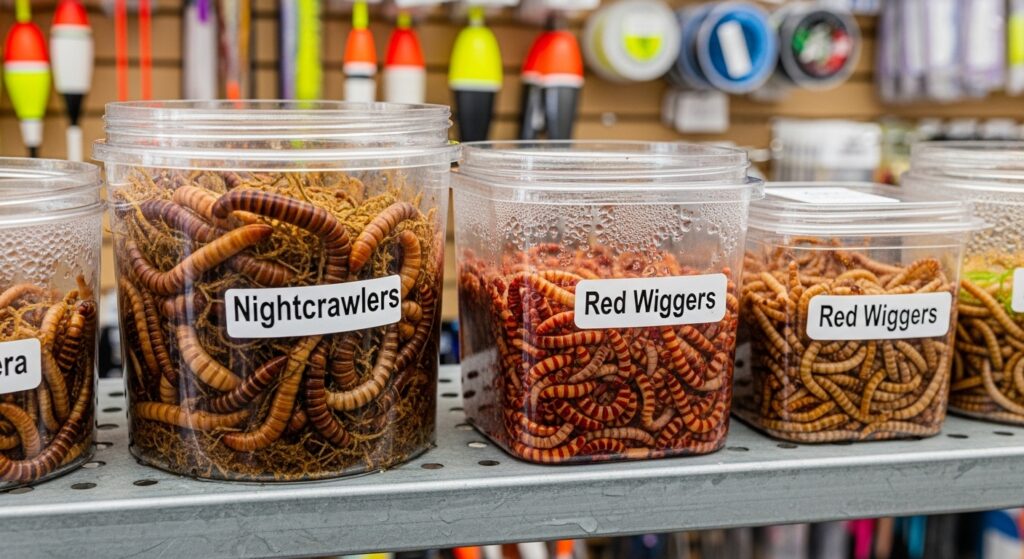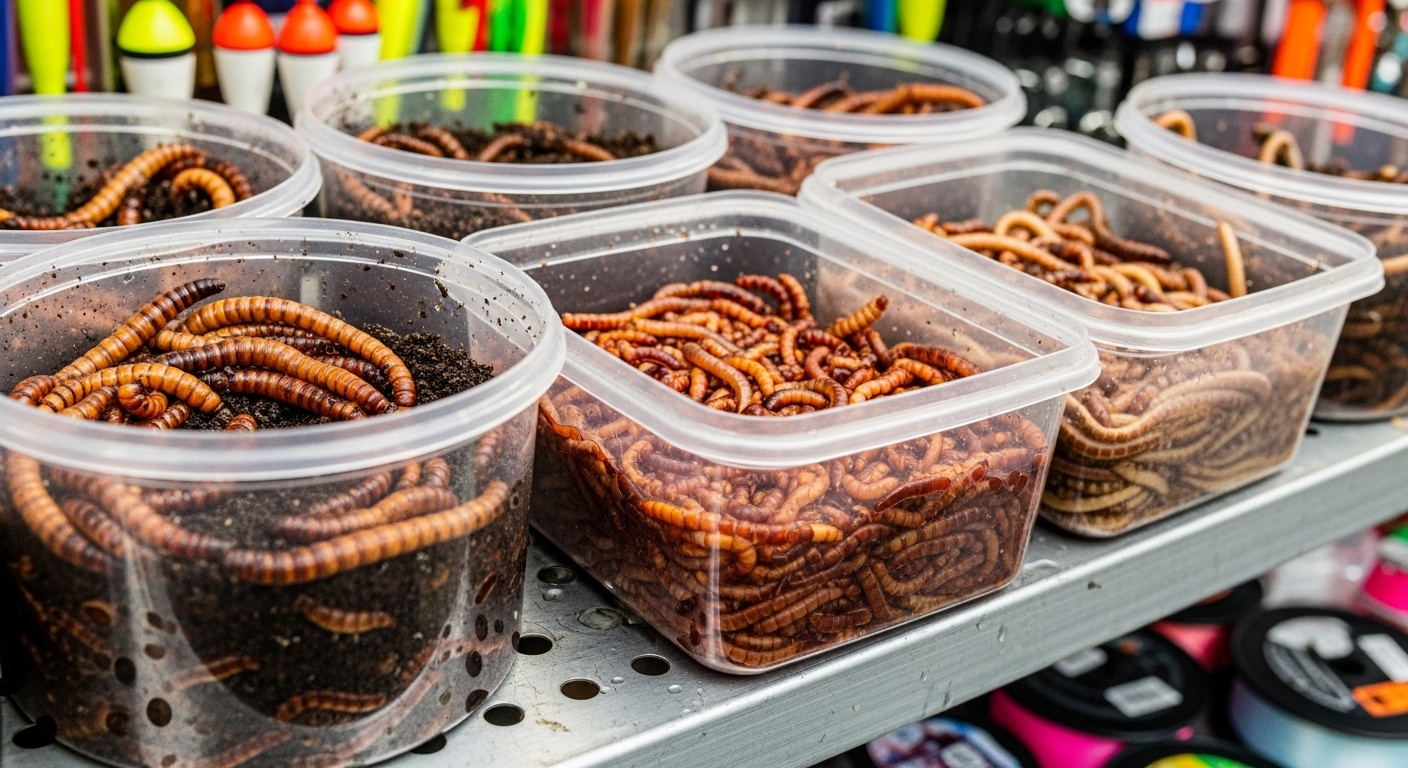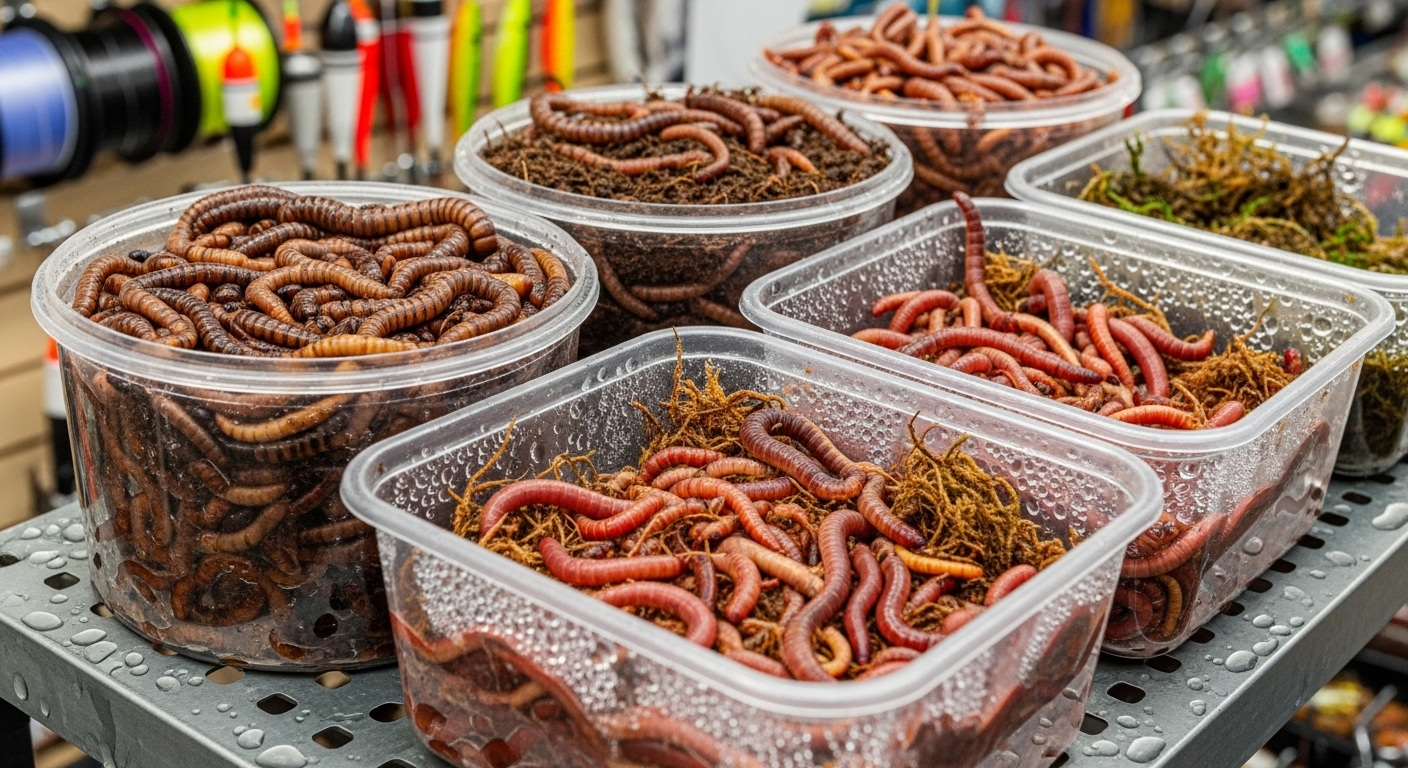
The Ultimate Guide to All Types of Fishing Worms
You’ve been there: standing in front of a bait shop cooler or a small refrigerator at a gas station, staring at containers labeled “Nightcrawlers,” “Red Wigglers,” and “Trout Worms.” They’re all just worms, right? Not quite. Choosing the right live bait can be the single most important decision you make before your first cast. Understanding the different types of fishing worms and their unique advantages is a fundamental skill that separates novice anglers from seasoned pros. Once you know which worm you need, the next step is finding it, and we can help you find live bait at nearby gas stations for ultimate convenience. If you’re on the road and in a hurry, a quick search for a gas station with worms near me can get you stocked fast.
This guide will break down the most common fishing worms, helping you match the perfect bait to your target species and fishing conditions for a more successful day on the water.
The All-Rounder: Nightcrawlers (Canadian, European, African)
Nightcrawlers are the quintessential fishing worm—large, juicy, and appealing to a wide variety of freshwater fish. They are the go-to choice for many anglers, but even within this category, there are important distinctions.
Canadian Nightcrawlers
The largest of the common crawlers, Canadians are prized for targeting bigger fish like largemouth bass, walleye, catfish, and even salmon. They are thick, long, and relatively durable on the hook. However, they prefer cold temperatures and can become lethargic or perish quickly in warm weather if not stored properly.
European Nightcrawlers (Euros)
Also known as Dendrobaenas or “Belgian worms,” Euros are slightly smaller than Canadians but are much more tolerant of warmer temperatures. They are incredibly active on the hook, and their constant wiggling is excellent for attracting fish. They are a superb choice for bass, walleye, and large trout.
African Nightcrawlers
Thriving in heat, African Nightcrawlers are the most active of the three. Their vigorous, almost frantic movement makes them irresistible to fish. They are an excellent option for summer fishing when other worms might become sluggish, targeting species like catfish and bass effectively.

The Aggressive Wiggler: Red Wigglers – Best Uses and Ideal Fish
Red Wigglers (Eisenia fetida) are the life of the party. While much smaller than nightcrawlers, their energetic, non-stop wiggling action makes them a top-tier choice for panfish. Fish like bluegill, crappie, perch, and rock bass can’t resist their frantic dance. Because of their smaller size, you can thread several onto a single hook to create a tempting, writhing ball of bait that’s perfect for attracting a school of hungry panfish.
They are also incredibly hardy and easy to care for, making them a favorite for both seasoned anglers and families introducing kids to fishing.
Other Common Fishing Worms: Dendrobaenas, Mealworms, and Wax Worms
Beyond the big names, a few other worms deserve a spot in your bait box.
- Dendrobaenas: As mentioned, this is just another name for the European Nightcrawler. They are often sold under this name and are an excellent, versatile bait.
- Mealworms: Technically the larvae of the darkling beetle, mealworms are a fantastic bait for trout, panfish, and ice fishing. Their harder exoskeleton helps them stay on the hook longer, and they are easy to store and handle.
- Wax Worms: These soft, grub-like larvae are candy to panfish and trout. Their bright white color provides excellent visibility in the water, and their soft bodies are easy for smaller fish to bite. They are a staple for ice fishing and early-season trout anglers.
Key Factors for Choosing the Right Worm (Size, Activity, Scent)
Selecting the perfect worm goes beyond just the species. Consider these three factors:
- Size: Match the size of your worm to the size of your target fish. A giant Canadian Nightcrawler might be too intimidating for a small bluegill, while a single red wiggler won’t be enough to entice a large flathead catfish.
- Activity: The worm’s movement is a primary attractant. In murky water, a highly active worm like an African Nightcrawler can draw fish in. In clear, cold water, the more subtle action of a Canadian might be more effective. The key is presenting a lively, healthy bait, which starts with knowing how to keep your fishing worms alive and active.
- Scent: All live worms release a natural scent that fish find appealing. A larger, juicier worm like a nightcrawler will naturally release more scent, making it a great choice for bottom fishing where scent trails are crucial.
Matching Your Worm to the Fish Species (and Fishing Conditions)
Putting it all together means adapting your choice to the situation. Clear water and finicky fish might call for a smaller, more natural presentation, while fishing in stained water after a rain might be the perfect time for a large, active nightcrawler.
Best Fishing Worms for Bass and Panfish
- For Bass: European and Canadian nightcrawlers are the top contenders. Their size presents a substantial meal that big bass find hard to ignore. Rig them on a simple hook with a split shot or on a harness for trolling.
- For Panfish (Bluegill, Crappie, Perch): Red wigglers are king. Their small size and intense action are perfect for triggering the aggressive feeding instincts of panfish. Wax worms are a close second, especially through the ice or for stocked trout.
Effective Rigging Techniques for Various Worm Types
How you hook your worm is just as important as which one you choose. Here are a few simple but effective methods:
- Full Thread: For smaller worms like red wigglers, thread the entire worm onto the hook, starting from the head. This secures the bait well for casting and prevents smaller fish from stealing it.
- Wacky Rig: Hook a larger worm (like a Euro) directly through the middle, leaving both ends to dangle and wiggle freely. This creates an irresistible, fluttering action as it falls.
- Hooking the Clitellum (Collar): For large nightcrawlers, hook the worm once through the firm, fleshy band near its head (the clitellum). This keeps the worm securely on the hook while allowing the maximum amount of its body to wriggle naturally.

Conclusion: The Right Worm for Every Catch
While any worm can catch a fish on a lucky day, consistently successful angling comes from making informed choices. By understanding the unique characteristics of different types of fishing worms—from the hefty nightcrawler to the energetic red wiggler—you can tailor your approach to your target species and environment. The next time you’re staring into that bait cooler, you’ll have the wisdom to select the perfect worm, rig it effectively, and significantly increase your chances of a memorable catch.
